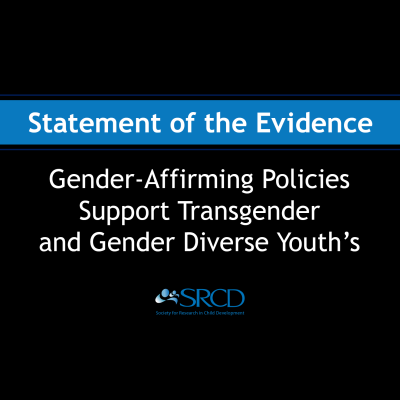Over-Scheduled Is Over-Stated: After-School Activities Are Good for Kids
Social Policy Report Brief, Volume 20, Issue 4
Why Does This Matter?
Extracurricular activities, after-school programs, and youth organizations have grown in popularity. In the last decade, federal funding and programs have increased amid growing awareness that how young people spend their time outside of school affects their development. Programs also have expanded because of the safety and supervision that organized activities provide youth with working parents. But are today’s youth over-scheduled? Some say yes, others say no. As policymakers take a closer look at these programs, new research clearly suggests that after-school activities, for the most part, are good for kids. Policymakers should be concerned about young people who don’t participate in these programs.
Policymakers considering whether to expand opportunities for young people to participate in activities outside of school—especially organized after-school care—should be reassured by research showing that such programs are generally good for young people.
Policy Implications
- Growing numbers of American children take part in extracurricular activities. Previous research has suggested that more than 80 percent are engaged in sports, lessons, or clubs. About 7 million are enrolled in after-school programs. And millions more participate in community-based programs and youth organizations such as 4-H, Boys & Girls Clubs of America, and Girls Inc.
- Young people’s participation in these activities has increased in recent years as a result of several factors, including the need for after-school activities as more and more mothers enter the workforce. Addressing this need, local, state, and federal funds have increased; consider, for example, the 21st Century Community Learning Center grants that support after-school programs, which rose from $40 million in 1998 to $1 billion in 2002.
- Research (see What the Research Says) shows that most children and adolescents who take part in organized activities are not being harmed and, in fact, are affected positively. New data suggest that 40 percent of young people don’t take part in extracurricular activities. They don’t do as well as their peers who do participate, raising questions about equity and access to programming.
What the Research Says
- Some worry that over-scheduling of youth is characterized by parental pressure, extensive time commitments, and disruptions to family functioning. A research review concludes that such worries are largely unfounded, seldom supported by empirical research, and don’t consider poor and working-class youth.
- New evidence from the Child Development Supplement to the Panel Study of Income Dynamics (using a nationally representative sample of U.S. 5- to 18-yearolds) and a review of previous studies, indicates that youth take part in organized activities because the activities are exciting and enjoyable, offer new skills, or provide social opportunities.
- Research also points to consistent and strong evidence that youth who participate in organized activities do better than youth who don’t. Such youth are more likely to have higher academic achievement, finish school, do well in college, be well-adjusted, smoke less, use drugs less often, and interact more with parents.
- Even among the very small number of youth who spend 20 or more hours a week in extracurricular activities, studies say the benefits are greater than or similar to youth not engaged in outside activities. Only in a very few areas related to well-being did these youth do poorer than their uninvolved peers: Highly-scheduled white youths had less time with parents, and black youths had fewer discussions with parents and lower self-esteem and well-being.
Facts at a Glance
- New research suggests that children and adolescents spend an average of about 5 hours a week participating in organized activities.
- Other activities done outside of school--playing games, watching TV, doing chores, hanging out, working at jobs, and doing homework--occupy as much or considerably more time than organized activities.
- Only a very small number of young people (between 3 and 6 percent) are very highly scheduled, spending 20 or more hours a week taking part in these activities.
- Previous research suggests that there may be a point of diminishing returns for the small number of young people with very high levels of involvement, with benefits leveling off or declining at very high amounts of participation.
- The educational benefits of playing sports seem to level off after participation in two competitive team sports.
- At least one prior study found that athletes report drinking more alcohol in high school than non-athletes, but the study did not report more drug use or smoking.
This brief summarizes a longer Social Policy Report, "Organized Activity Participation, Positive Youth Development, and the Over-Scheduling Hypothesis," by Joseph L. Mahoney, Associate Professor in the Department of Psychology at Yale University, Angel L. Harris, Assistant Professor of Sociology at the University of Texas at Austin, and Jacquelynne S. Eccles, McKeachie Collegiate Professor of Psychology at the University of Michigan.


